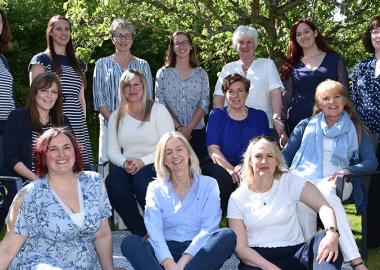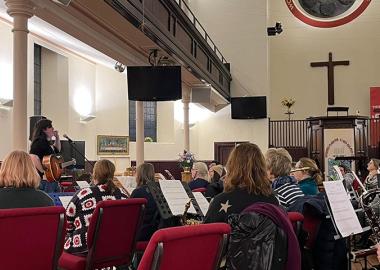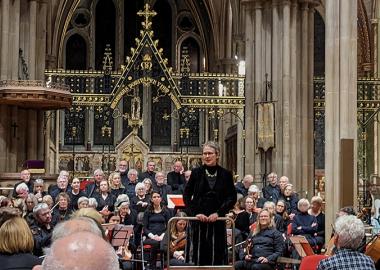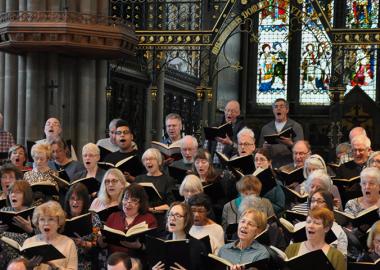Work has been continuing at a hectic pace for my piece for the Bellfolk Handbell Ringers! Following our first workshop at the start of the year, I spent the next six weeks putting together a full draft of the piece, with the aim of bringing something as close as possible to the finished product to our second workshop in February.
A few ideas and textures from my open sketches became the key ideas and sounds behind the piece: a free opening, in which the ringers are divided into five independent duets to create a nebulous musical texture drifting between stability and suspense; a choral accompanied by running notes passed around the ensemble; and a conclusion pitting slow-moving chords against freely tolling single notes.
Writing for a team of handbell ringers has been unlike any other ensemble I’ve ever written for – the ‘composer’s eye’ view of the music as a whole is completely removed from the actual experience of ringing the piece, which requires intense focus around two or three pitches rather than a broader overview. Sections where notes pass from one independent group to another required a degree of logistical planning far beyond the musical effect in the piece, and so I tweaked these to make complex-sounding textures as simple to play as possible.
Another perspective I’ve taken on board is the importance for the ringers of a picture or narrative in giving the music a context for way it should be performed. When I’m writing, I often use extra-musical stimuli to help me get started, but once the musical ideas begin to flow, my composition process is much more focused on playing with the sounds themselves rather than composing to an image or story. So after finishing the piece, I’ve had to re-contextualise the sounds by writing a narrative or image for the two movements, in order to create a story that helps the group to make sense of what I’ve written.
So the final title ‘Starsong and Nocturne’, which describes loosely the two linked but contrasting movements of the piece: the first, in which small independent parts shift and move around each other, like constellations in the night sky; and the second, a simple tune that is gradually embellished with increasing complexity.
These images will be useful for informing the final rehearsals and workshops for the piece – working on bringing the notes on the page to life!










